GULENSU, ISTANBUL
The aim of this exercise is to utilize the evolutionary multi-objective optimization engine in the urban tissue of Istanbul and generate different simulations aiming to find the fittest solution to a problem that is constrained by a set of predefined limitations. The neighborhood to optimize in this exercise is Gulensu in the district of Maltepe.
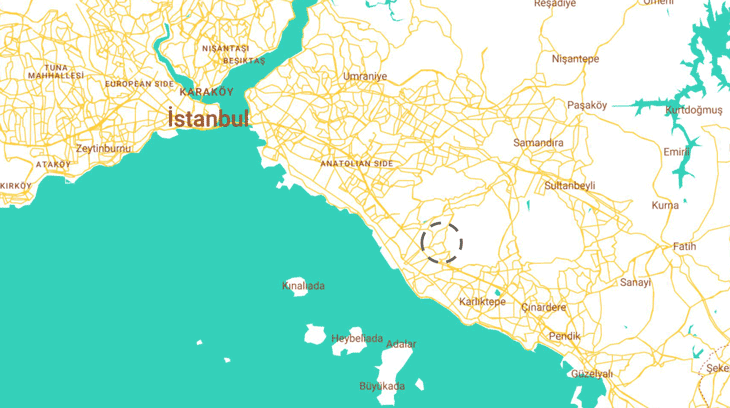
The site is located with the sea on its west and the valley on the east. What makes the site even interesting is that it is highly contoured and slopes in all directions, as there are multiple peaks. The streets spiral around the mountains reaching up to the peak. The houses follow the same logic.
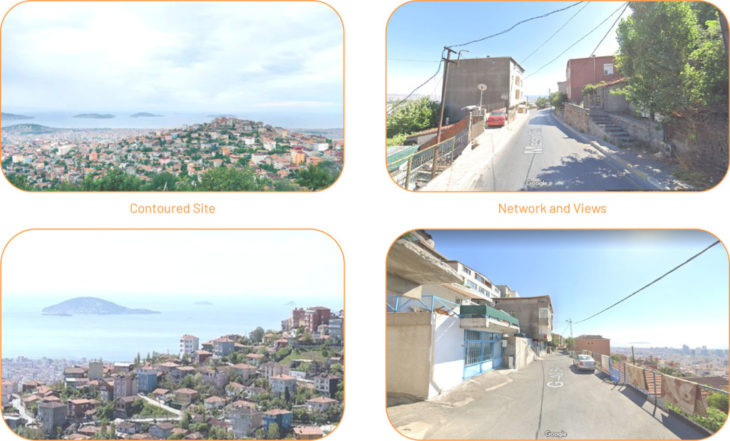
URBAN MORPHOLOGICAL CHARACTERISTICS
The site is contoured with the roads following the same terrain. The houses are built parallel to the street and the parcels of land adjacent to the street are divided into plots.
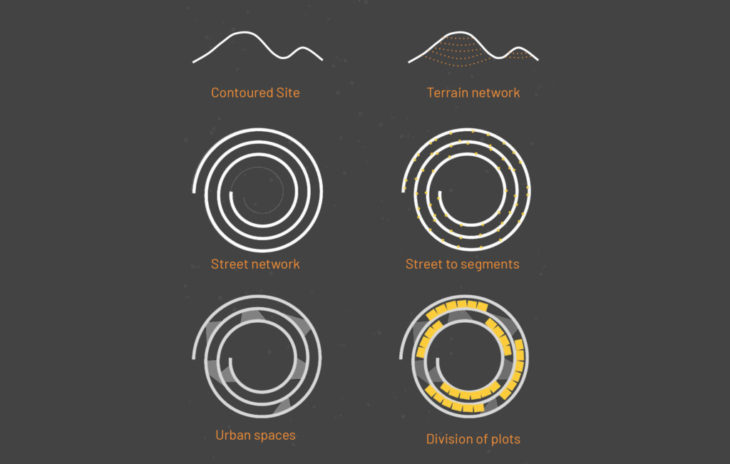
PREPARATION OF THE PHENOTYPE
The phenotype is prepared based on the characteristics of the urban morphology of Gulensu.
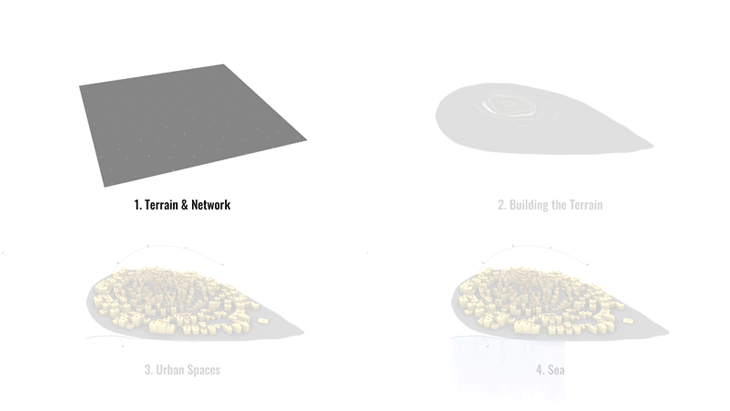
CHALLENGES
The main challenges are the ‘lack’ of public open spaces, connectivity and accessibility. There is also a demand for more houses in the region.
DEFINITION OF THE FITNESS CRITERIA // OBJECTIVES
Once defined the challenges and the phenotype, the fitness criteria for the development of the project is defined.

DESIGN PROBLEM
The design problem is structured specifying the goal which is to generate a new urban fabric which can respond to the increasing housing demand while also maintaining the characteristic of houses perched on the hill with views to the sea.
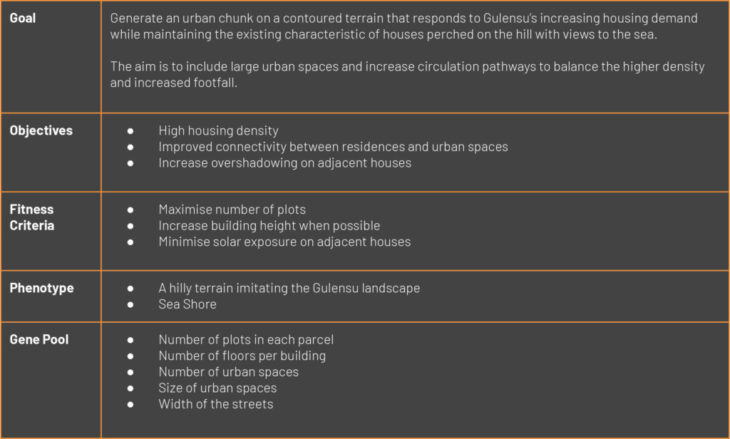
EVOLUTIONARY MATRIX

METHODOLOGY
Genes : The setup for the urban fabric is started with creating contoured streets that are scalable in XY directions readjusting the street widths and the plot boundaries. Additionally, the dynamic number of floors for each house defines different building heights.
Objectives : The building density is maximized while also maximizing the height difference at different terrain levels for better view of the sea. A solar analysis is done on the buildings to maximize sun shade as Istanbul gets hot and sunny during summers.
Phenotype : The phenotype consists of the sea shore and buildings on the terrain with street networks.
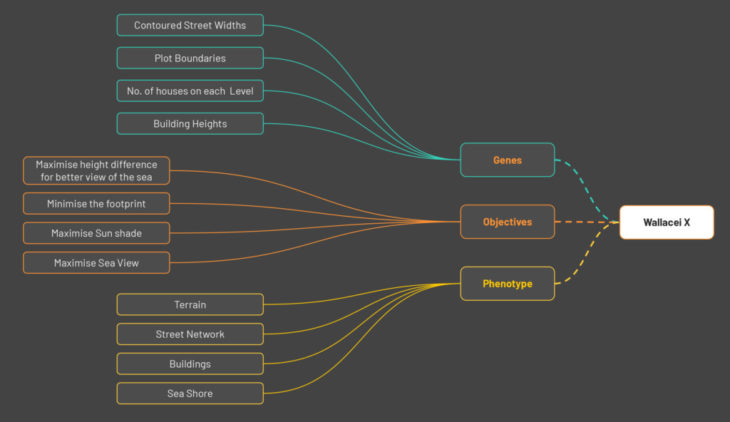
RESULTS OF THE EVOLUTIONARY SIMULATION
The simulation is run for a population with a generation size of 20 and a count of 40, giving us 800 solutions. This resulted in the standard deviation charts.
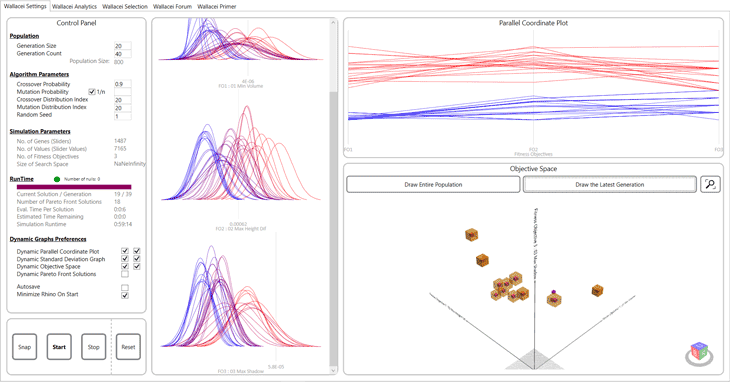
The latest generations shown in blue are peaking as opposed to the first generations in red for the objective of the density of the buildings.
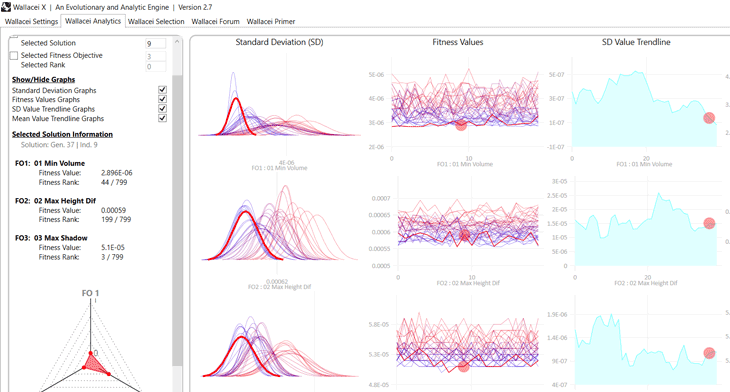
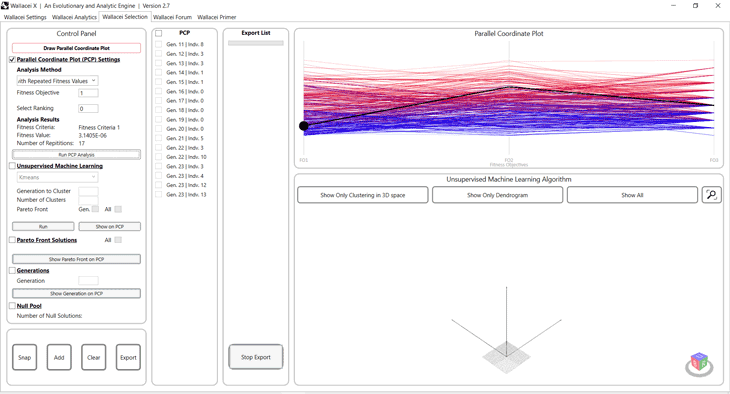
PARETO FRONT SOLUTIONS

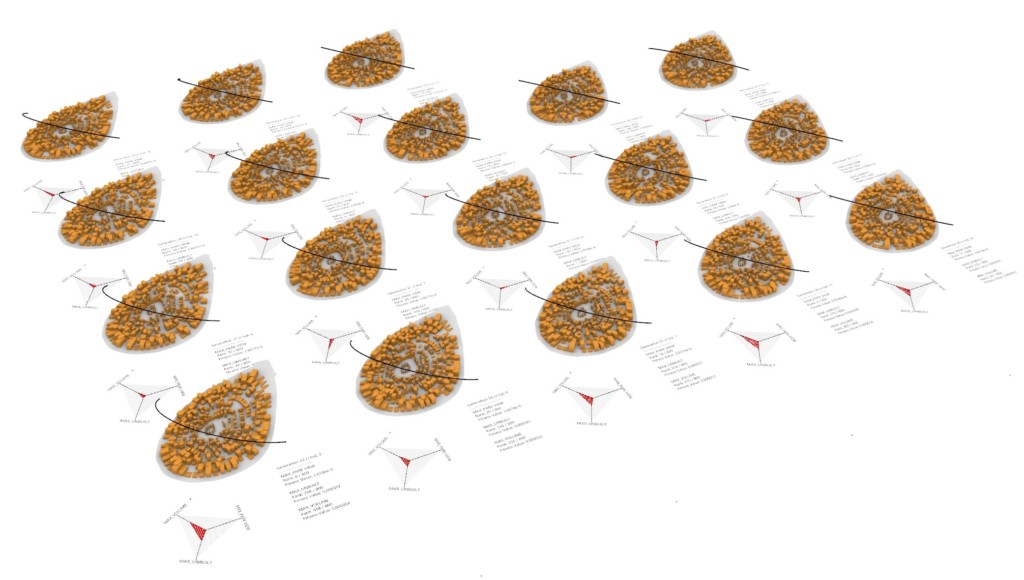
CLUSTERING GENERATIONS
The results are clustered in three by average-linkage.
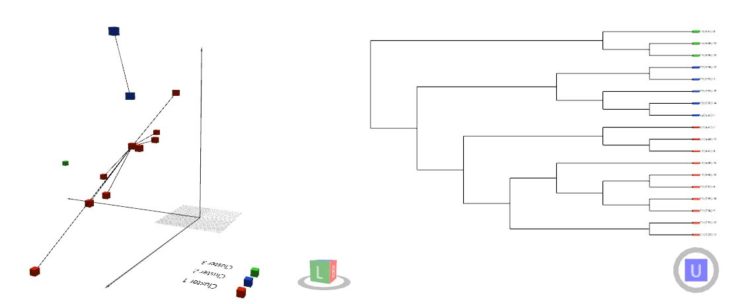
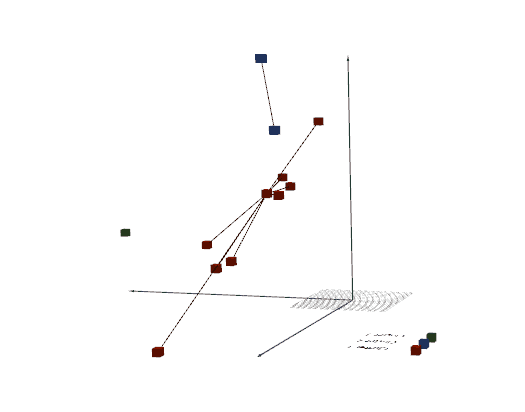
GENOME SEQUENCING
As we observe at the end of the sequence the colors start to repeat more, indicating that Wallacei is forming and generating patterns. The clustering is more clear in some fitness criteria and not so clear in others. These patterns indicate that the evolutionary algorithm is trying to achieve the optimal result according to our fitness criteria.

CONCLUSION
To conclude, the selected 3 objectives are optimized to their individual parameters. Yet, a further study of the connections between the streets could lead to more accurate conclusions. The results could be more interesting if it is tested with more variations of the given phenotype.
‘Coiling Gulensu’ is a project of IAAC institute for Advanced Architecture of Catalonia developed in the Master in City & Technology 2021/22 by Students: Aida Hassan, Gayatri Agrawal, Kishwerniha Buhari and Faculty: Milad Showkatbakhsh